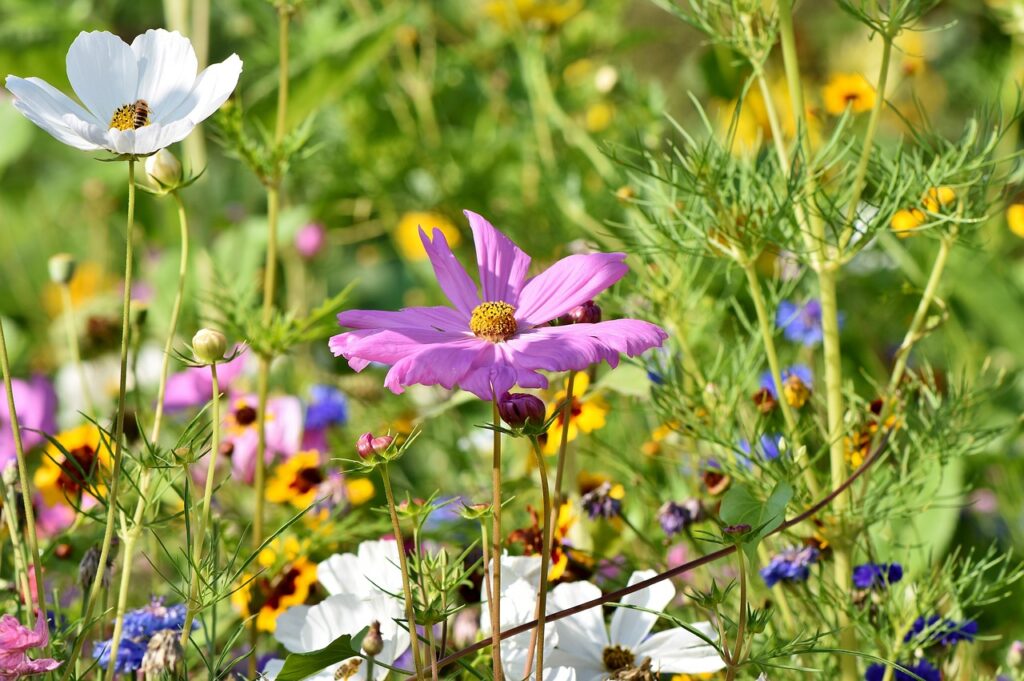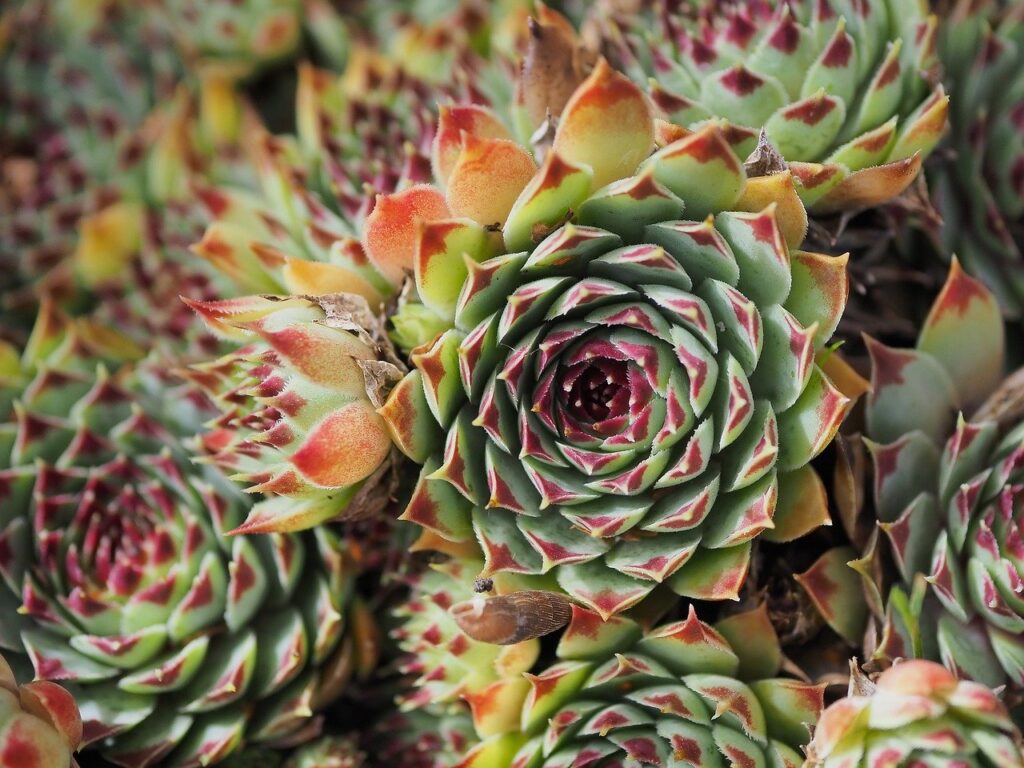Looking to create colorful and vibrant home garden? Not many flowering plants can come close to the beauty and versatility of cosmos wildflowers. With their charming and vibrant blooms(white, yellow, pink, purple and orange wildflowers), cosmos wildflowers have become a favorite among gardeners, bringing an explosion of colors and attracting beneficial insects like bees and butterflies. They offer some height and are a lovely contrast to low growing wildflowers. In this article, we will explore the different types of cosmos wildflowers, the benefits of planting them in your garden, and how to successfully grow them from seed.
As an Amazon and ebay Affiliate we may earn a commission off any purchases made through our links. This won’t affect the price you pay.
Wildflower Mixes
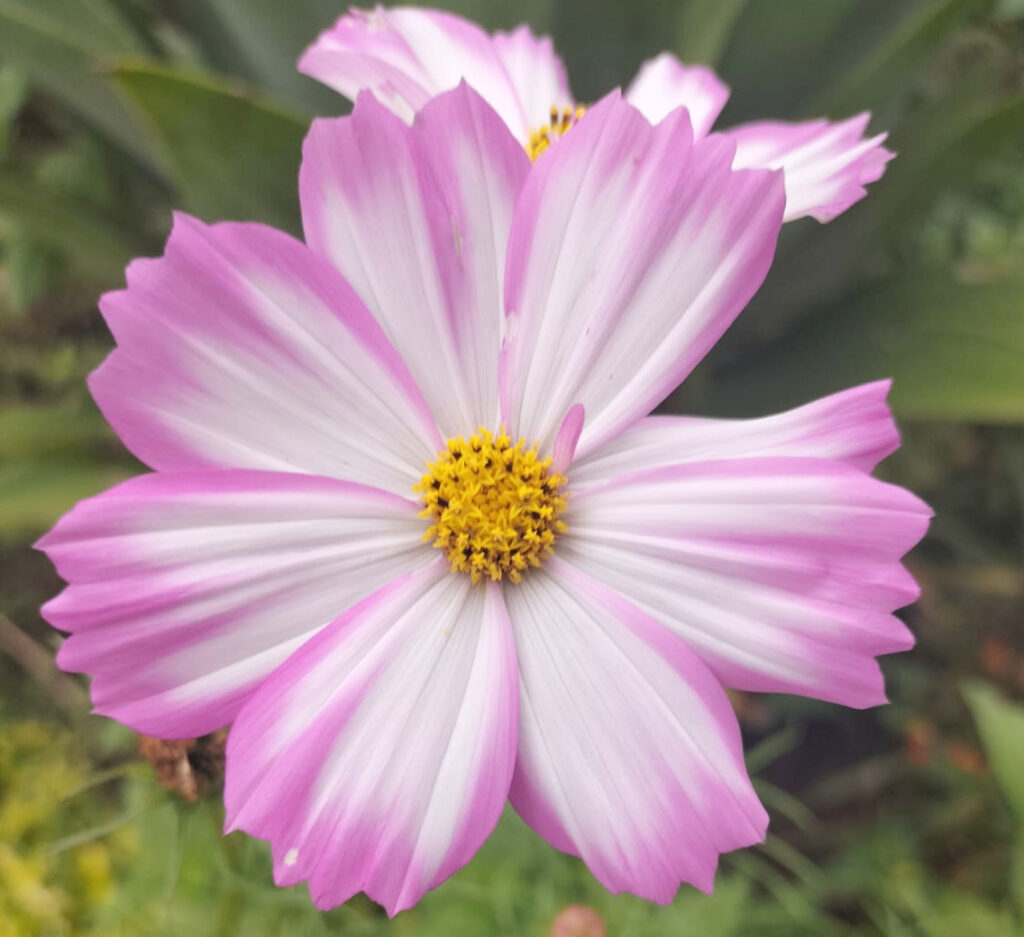
In recent years, the popularity of wildflower mixes has soared due to their unique benefits. These mixes consist of a wide variety of wildflower seeds, each blooming at different times, resulting in a stunning display of flowers in various colors, shapes, and sizes. Among these mixtures, wild cosmos stands out as a particularly attractive option for any flower garden.
Not only do these plants self-seed effortlessly, ensuring their return season after season, but they are also readily available in garden centers and online shops. This accessibility makes it convenient for both novice and experienced gardeners to incorporate cosmos seeds into their garden. Furthermore, the wildflower seed mixes that include cosmos seeds are an excellent choice for individuals looking to create a diverse and vibrant garden without the need to individually select and plant each flower.
Get the All-in-One Seed Banks for this Spring!Cosmos Varieties
One advantage of using wildflower seed mixes is that they offer a variety of cosmos species to choose from. Here are some varieties worth considering.
Cosmos bipinnatus
Also known as wild cosmos or Mexican aster, Cosmos bipinnatus is one of the most common and widely grown varieties of cosmos. This species features delicate, daisy-like flowers in shades of pink, white, and red. The flowers have a prominent yellow center and a feathery appearance due to their finely divided, fern-like leaves. Wild cosmos plants can reach heights of up to 3 feet, creating a stunning display when mass planted.
Cosmos sulphureus
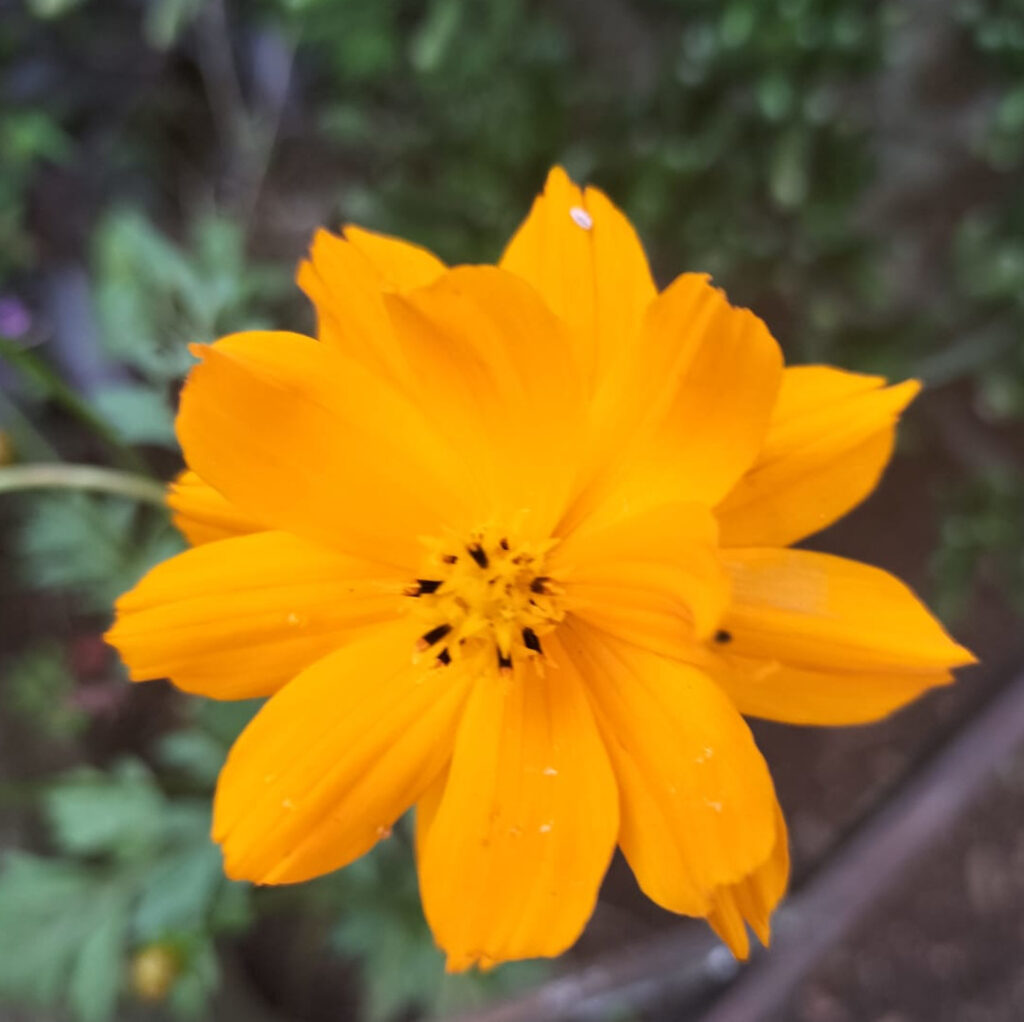
Sulphur cosmos, also known as Cosmos sulphureus, is another popular variety of cosmos wildflowers. Unlike its wild counterpart, sulphur cosmos produces vibrant orange, yellow, and maroon flowers. These add a fiery touch to any garden. This variety is shorter in height, typically reaching around 2 feet tall. The flowers of sulphur cosmos have a single row of petals and a contrasting dark center.
Cosmos atrosanguineus
Sometimes referred to as chocolate cosmos, Cosmos atrosanguineus is an interesting variety that stands out due to its unique fragrance. This species produces dark red to chocolate-colored flowers. They have a velvety texture and a rich scent reminiscent of dark chocolate. Chocolate cosmos is slightly shorter than other cosmos varieties, usually growing to a height of around 1 to 2 feet.
Cosmos bipinnatus ‘Candy Stripe’
This variety, often referred to as candy stripe cosmos, features stunning flowers with striped petals in shades of pink and white. The petals of candy stripe cosmos exhibit beautiful color variations and patterns, creating an eye-catching display in the garden. This variety typically grows to a height of 2 to 3 feet and looks beautiful when planted in groups or clusters.

Cosmos bipinnatus ‘Seashells’
Seashells cosmos is named for its unique flower shape, which resembles seashells or fluted cups. The petals of this variety are rolled into tubular shapes, giving the flowers an interesting and distinctive appearance. Seashells cosmos comes in various colors, including pink, white, and carmine. It grows to a height of around 4 feet, making it a great choice for adding vertical interest to the garden.
Cosmos sulphureus ‘Brightness’
As the name suggests, brightness cosmos is known for its vibrant and eye-catching colors. This variety produces large, bright orange flowers that stand out in any garden. The flowers of brightness cosmos have a slightly cupped shape and a contrasting dark center. This variety tends to be shorter in height, growing to around 1 to 2 feet.
These are just a few examples of the different types of cosmos wildflowers available. Each variety adds its own unique color, shape, and character to the garden, allowing for endless possibilities in creating colorful and dynamic displays.

Annual vs Perennial Cosmos
Some cosmos plants are annuals, meaning they complete their life cycle within one year, while others are perennials, returning year after year. Let’s explore the differences between annual and perennial cosmos varieties.
Annual Cosmos
The most commonly cultivated cosmos variety, Cosmos bipinnatus, is an annual plant. This species goes through its entire life cycle, from germination to seed production, within a single growing season. Annual cosmos plants are fast-growing and produce an abundance of colorful flowers, making them a favorite among gardeners. They typically start blooming in mid-summer and continue through early fall.
Annual cosmos plants are often grown from seeds, and they readily self-sow, meaning the seeds they produce can germinate and grow on their own in subsequent years. This self-sowing habit can create a natural and continuously blooming display of cosmos flowers in the garden. However, it’s important to note that the self-sown seedlings may vary slightly in color and form compared to the original plants.
Perennial Cosmos
While annual varieties dominate the gardening scene, there is one species that is classified as a perennial – Cosmos atrosanguineus, commonly known as chocolate cosmos. This particular cosmos variety is native to Mexico and is treasured for its rich chocolate fragrance. Unlike other cosmos species, chocolate cosmos is a bulbous perennial, meaning it grows from underground bulbs and returns every year.
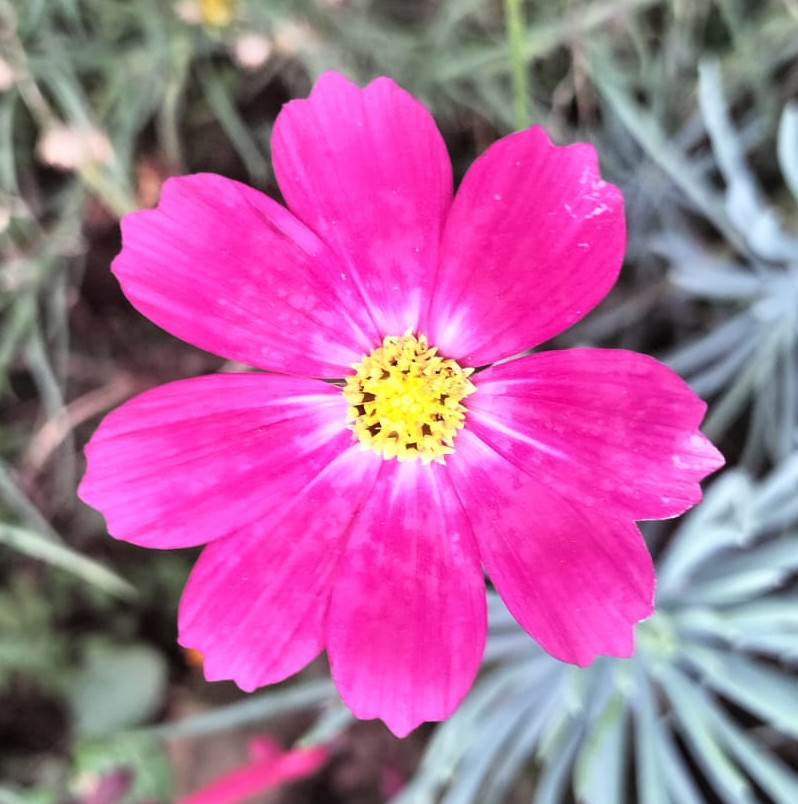
Being a perennial, chocolate cosmos can be overwintered in milder climates, allowing it to regrow for several years. However, it’s worth noting that chocolate cosmos can be slightly more challenging to grow and may require specific conditions, such as well-drained soil and protection from harsh cold temperatures. In colder regions, it may be necessary to lift and store the bulbs indoors during the winter to prevent frost damage.
It’s important to keep these distinctions in mind when choosing cosmos plants for your garden. If you’re looking for a colorful annual display that is easy to grow from seed and provides a dazzling array of blooms, annual cosmos varieties like Cosmos bipinnatus or Cosmos sulphureus are excellent choices. These plants will need to be replanted or left to self-sow each year for continuous blooming.
On the other hand, if you’re interested in adding a unique and fragrant touch to your garden while benefitting from a longer-term investment, consider incorporating chocolate cosmos (Cosmos atrosanguineus) into your landscaping. However, keep in mind that this perennial cosmos requires more attention and care compared to its annual counterparts.
Growing from Seed
When sowing cosmos seeds, it’s important to cover them lightly with soil and keep the soil consistently moist until germination occurs. Germination usually takes place within 7-14 days, and once the seedlings have developed their true leaves, they can be thinned to allow for proper spacing between plants. This will ensure optimal growth and prevent overcrowding.
Decrease Quantity
To decrease the quantity of wildflowers in your garden, thinning is essential. This process involves removing excess seedlings to give the remaining ones more space to grow and develop. Thinning should be done when the seedlings are around 2-3 inches tall and can be easily distinguished from one another. Use a pair of scissors or garden shears to carefully remove the unwanted seedlings, being careful not to damage the roots of the remaining ones.
Increase Quantity
On the other hand, if you want to increase the quantity of cosmos wildflowers in your garden, simply sow a higher number of seeds or plant additional seedlings. Since cosmos seeds have a high germination rate, you can easily achieve a dense and colorful display by sowing them in clusters or groups.
Cut Flowers
Cosmos wildflowers are not only beautiful in your garden but also make excellent cut flowers. Their long stems and vibrant colors make them perfect for creating arrangements and bouquets. To ensure a longer vase life, harvest flowers when they are in bud or have just started to open. Remember to cut the stems at an angle (45 degrees or close to) and place them in a clean vase filled with water. Change the water a couple of times a week to make sure it stays fresh.

Complement Cosmos
If you’re interested in exploring other wildflower species to complement your cosmos, consider adding morning glory or Johnny Jump Up to your garden. Morning glory flowers open up in the morning, displaying large, trumpet-shaped blooms in shades of blue, pink, and purple. Johnny Jump Up, also known as heartsease, features small, brightly colored pansy-like flowers.
The Useful Side of Cosmos
In addition to their beauty, cosmos wildflowers can also serve practical purposes in your garden. For instance, they can be used as a cover crop to help suppress weeds and improve the soil structure. Their extensive root system helps to break up compacted soil, allowing air and water to reach plant roots more easily. Additionally, these plants act as living mulch, helping to retain soil moisture and prevent erosion.

Growing Conditions
When it comes to planting cosmos wildflowers, it’s important to provide them with the right growing conditions. As mentioned earlier, they thrive in full sun. Select a sunny spot in your garden for optimal growth. While they are drought tolerant, regular watering is essential during dry spells to ensure healthy and vigorous growth.
In terms of soil preferences, they are not too fussy. They can do well in a variety of soil types, including sandy, loamy, and clay soils. However, they prefer well-draining soil, so if you have heavy clay soil, consider adding organic matter such as compost or peat moss to improve drainage.
Cosmos wildflowers are a fantastic addition to add a color sensation to any home garden. Whether you choose to incorporate them into your existing flower beds or opt for wildflower seed mixes containing cosmos seeds, these beautiful flowers will bring color, diversity, and attract beneficial pollinators to your garden. With their adaptability to various growing conditions, cosmos wildflowers are a versatile choice for gardeners of all experience levels.
As an Amazon and ebay Affiliate we may earn a commission off any purchases made through our links. This won’t affect the price you pay.
